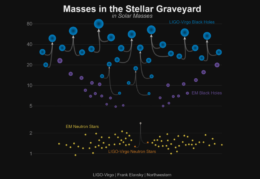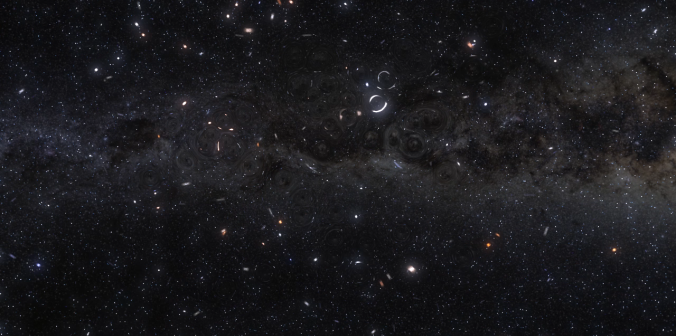When the Laser Interferometer Gravitational-Wave Observatory (LIGO) discovered its first merging black holes, astronomers were surprised: these black holes were much larger than we had expected! A new study looks at what these observations might tell us about black holes in star clusters.

Artist’s impression of an X-ray binary, in which a black hole accretes matter from a stellar companion. [NASA/CXC/M.Weiss]
Unexpected Masses
Before the first gravitational-wave detection in 2015, the theoretical existence of black holes was solidly established within the framework of general relativity. Observational evidence for stellar-mass black holes came from X-ray binaries: binary star systems consisting of a compact object accreting matter from a companion star.
Though we can’t directly observe the black holes in X-ray binaries, we can infer their existence by watching the motions of the binary. By measuring the dynamics of these systems, we’ve obtained mass estimates for the inferred black holes in perhaps two dozen binaries so far; they typically range between about 5 and 20 solar masses.

A look at the masses for the black holes and neutron stars we’ve been able to measure. The black holes observed via X-rays (purple) are much less massive than those observed recently via gravitational waves (blue). [LIGO-Virgo/Frank Elavsky/Northwestern U.]
Two Formation Channels?
What’s creating the dichotomy between the lower black-hole masses measured in X-ray binaries and the higher masses measured from mergers? Some scientists speculate that X-ray-detected and gravitational-wave-detected black holes are dominated by two different formation channels:
- A binary star system evolves in isolation, with at least one star eventually becoming a black hole. This channel is proposed for X-ray-detected black holes.
- Stars evolve individually within a cluster, and some of the resulting black holes later pair up into binaries via dynamical interactions in the cluster. This channel is proposed for gravitational-wave-detected black holes.
Can LIGO/Virgo observations tell us more about the latter scenario? A team of scientists led by Rosalba Perna (Stony Brook University) have run a series of N-body simulations of initially isolated black holes in a mini-cluster to find out.
Simulating Interactions

Comparison between the model prediction for the distribution of observed total mass after 10 observations for three models with different initial mass distributions and the LIGO/Virgo observations (black line). The best-fit model (green) is consistent with evolution of a cluster of low-metallicity, massive stars. [Perna et al. 2019]
The team also shows that the particular shape of the distribution of masses measured at merger is dependent upon the distribution of initial black-hole masses in the cluster. By comparing LIGO/Virgo’s observations to their simulations with different initial mass distributions, Perna and collaborators show that the observations are consistent with the distribution expected for a star cluster that initially consists of massive, low-metallicity stars.
While these comparisons are always tricky with only 20 data points, this study can be easily expanded in the future, as LIGO and Virgo continue to amass more observations. For now, however, the dynamical formation channel is looking like a promising explanation for gravitational-wave-detected black holes!
Citation
“Constraining the Black Hole Initial Mass Function with LIGO/Virgo Observations,” Rosalba Perna et al 2019 ApJL 878 L1. doi:10.3847/2041-8213/ab2336

1 Comment
Pingback: Odkrywanie zagadki masy czarnej dziury – PTMA Kraków